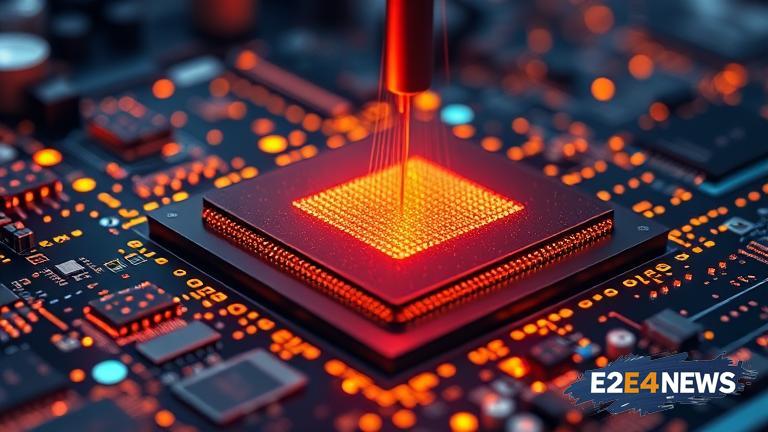The world of semiconductor manufacturing is on the cusp of a revolution, driven by the introduction of the Next-Gen CMP Ventus System and Ceria Slurry. These cutting-edge technologies are poised to play a crucial role in the production of 2nm node chips, which promise to deliver unprecedented levels of performance, power efficiency, and storage capacity. The CMP Ventus System is a game-changer in the field of chemical mechanical planarization (CMP), offering improved planarity, reduced defectivity, and increased throughput. By leveraging advanced materials and designs, the Ventus System enables the creation of ultra-smooth surfaces, which is essential for the fabrication of 2nm node chips. The Ceria Slurry, on the other hand, is a specially formulated abrasive material that is designed to work in tandem with the Ventus System. Its unique properties allow for the precise removal of material, resulting in a planarized surface that is free from defects and imperfections. The combination of the Ventus System and Ceria Slurry has been shown to improve the overall yield and quality of 2nm node chips, making it an attractive solution for manufacturers looking to stay ahead of the curve. As the demand for smaller, faster, and more powerful chips continues to grow, the importance of these technologies will only continue to increase. The 2nm node chip market is expected to experience rapid growth in the coming years, driven by the increasing adoption of artificial intelligence, 5G networks, and the Internet of Things (IoT). The Next-Gen CMP Ventus System and Ceria Slurry are well-positioned to capitalize on this trend, offering a competitive advantage to manufacturers who adopt these technologies. In addition to their technical benefits, the Ventus System and Ceria Slurry also offer a number of economic and environmental advantages. By reducing waste and improving yields, these technologies can help manufacturers reduce their costs and minimize their environmental footprint. Furthermore, the use of these technologies can also help to reduce the energy consumption and greenhouse gas emissions associated with chip production. As the semiconductor industry continues to evolve, it is likely that the Next-Gen CMP Ventus System and Ceria Slurry will play an increasingly important role in shaping the future of chip production. With their ability to enable the creation of 2nm node chips with enhanced performance and efficiency, these technologies are poised to have a major impact on a wide range of applications, from consumer electronics to automotive and industrial systems. The development of these technologies is a testament to the innovative spirit and expertise of the companies involved, and demonstrates the importance of continued investment in research and development. As the world becomes increasingly dependent on semiconductor technology, the importance of advancements like the Next-Gen CMP Ventus System and Ceria Slurry will only continue to grow. In conclusion, the Next-Gen CMP Ventus System and Ceria Slurry are revolutionary technologies that are set to transform the world of chip production. With their ability to enable the creation of 2nm node chips with enhanced performance and efficiency, these technologies are poised to have a major impact on a wide range of applications and industries. As the semiconductor industry continues to evolve, it is likely that these technologies will play an increasingly important role in shaping the future of chip production.





